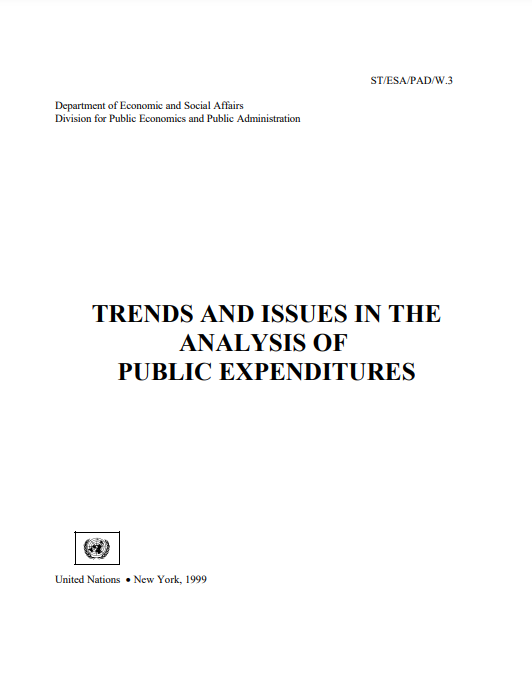
This report contains six papers presented at a United Nations Ad Hoc Expert Group Meeting on "Patterns and Trends in Public Expenditures", held at United Nations headquarters in New York on 8 - 10 June 1999. The first paper focuses on public versus private provision of pensions. Pensions can be provided by three different systems of finance, often described as "pillars". The first pillar provides a minimum income for all elderly citizens, based on transfer payments and independent of individual contributions. Under pillar two, the pension system receives mandatory contributions from the working population and promises the largest benefits to those who contribute the most. The third pillar is based on voluntary contributions, as a supplement to or a substitute for the other two pension systems. In many countries, a combination or coexistence of these three pillars can be found, and, indeed, a mixed approach is advocated by advisory organizations like the World Bank. While the first and the third pillar are not controversial, the paper states that there is dispute about whether governments may force their citizens into mandatory savings with defined benefit. Various criticisms and reform suggestions, especially regarding the second pillar of pension provision, are discussed. The focal points are the privatization of public pension schemes, a switch from defined benefit to defined contribution, and a shift from pay-as-you-go to full funding. In addition, several risks that can affect retirement income are discussed: political risks, low investment returns, increasing life expectancy, and inflation. The paper also discusses problems of redistribution within pension systems. While private savings (as in pillar three) are not subject to redistribution, the paper argues that redistribution, if politically desirable, is best met in pillar one, which is based on government transfers. The conclusion is that the decision whether to adopt a public or a private system of pensions for the second pillar depends less on economic considerations but on the definition of the role of the State in society.
 Bienvenue aux Nations Unies
Bienvenue aux Nations Unies